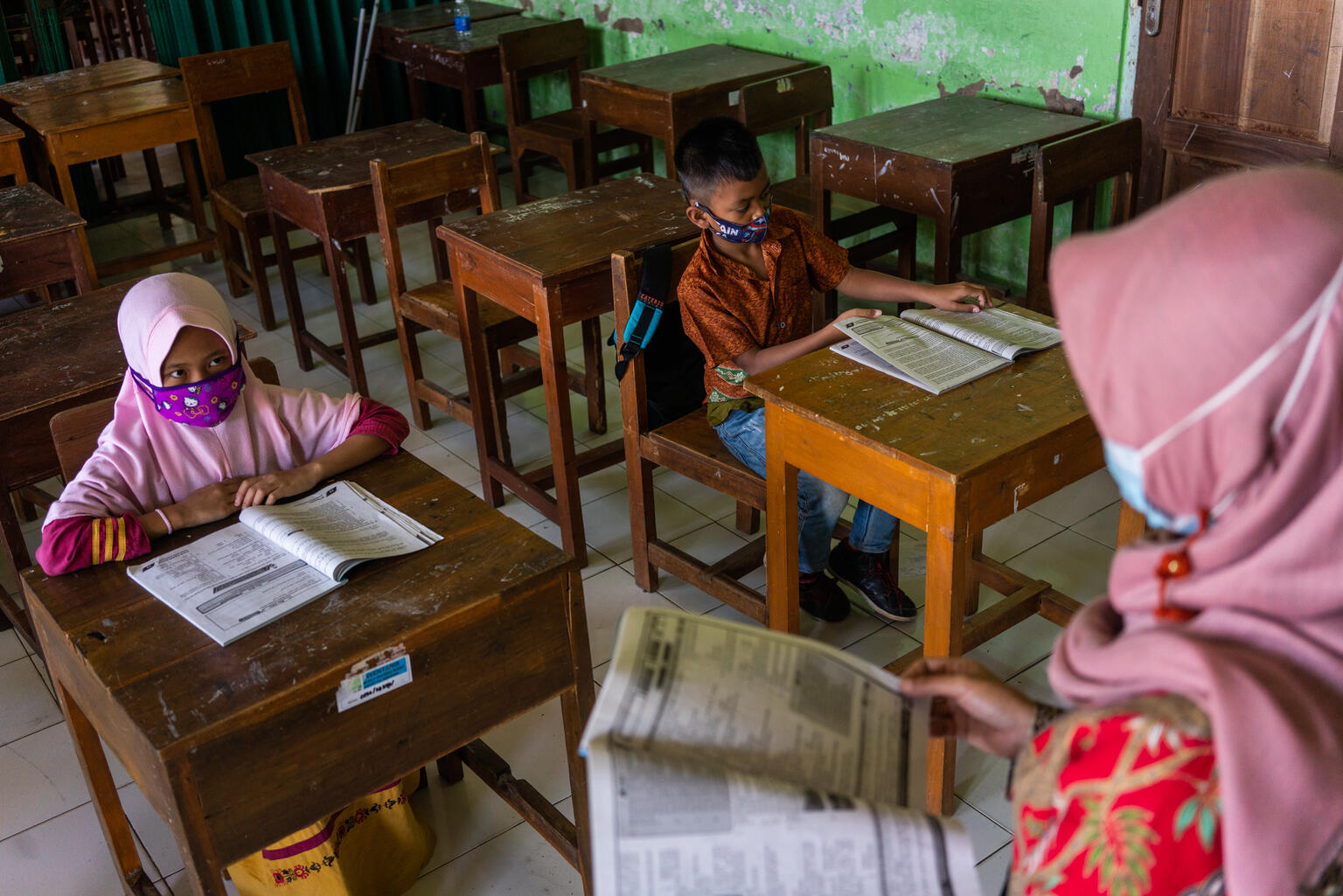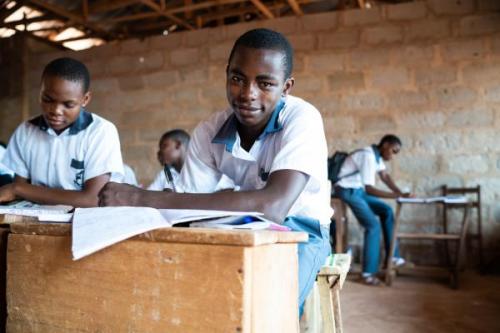
UNICEF’s education and child protection teams outline how to prioritize the protection of children in the reopening of schools, post-COVID-19
With millions of children still affected by school closures during the COVID-19 pandemic, the most vulnerable are still deprived of an important space that offered them safety, stability and a sense of normalcy. For these students, being at home exposes them to risks such as violence, child marriage or child labour, without the support and protection of professionals, including school staff. Between one-quarter and one-third of children live in homes where abuse, neglect and domestic violence are present, and during COVID-19, many of those children were stripped of the relationships with teachers and friends that often, were the only healthy attachments they had.
During this pandemic, it has become very clear that children’s mental health has declined rather markedly due to the prolonged lockdowns with negative consequences on the socioeconomic wellbeing of families. Evidence also shows increases in gender-related violence and the putting children at great risk especially girls. The list of consequences is long and compounded based on the context in which the child is in. It is safe to say that without an urgent response, the COVID-19 pandemic will profoundly impact the future of this generation.
Without an urgent response, the COVID-19 pandemic will profoundly impact the future of this generation.
In light of such a situation, the pandemic has given us all an opportunity to reflect on the important role of schools and how school systems work to support each individual child, and that child’s opportunity to learn. Perhaps most importantly, we have been given an opportunity to integrate what we already know and what we have learned during the pandemic into the reopening of schools. Schools must now balance the educational, social and emotional needs of learners along with the health and safety of students and staff in the midst of the evolving COVID-19 pandemic. We cannot waste this unique opportunity.
In response, UNICEF’s education and protection teams have outlined how to strengthen the protection of the children as they return to school after an abrupt and difficult year. In the Framework for Reopening of Schools by UNESCO, UNICEF, the World Bank, WFP and UNHCR, the need to re-establish the delivery of essential services, including child protection, in formal and non-formal education is highlighted. Safe to Learn also offers critical recommendations to reopen schools safely.
Five services that are recommended to prioritize in efforts when reopening schools include:
- Mental health and psychosocial support. Many children may have experienced mental and emotional stress during school closures and face anxiety as they return. Children have countless questions: Have their friendships changed? Will the teachers remember them? Will they be too far behind in their schoolwork? These are just a few examples that anxiety could revolve around. Providing mental health and psychosocial support to returning students needs to be the number one priority.
- Procedures for identifying, responding, and referring child protection incidents. During lockdowns, children may have been at higher risk of abuse and neglect in the family environment. Typically, school staff are the primary reporters of abuse and neglect to child protection authorities, and as such, we should expect a surge in protection referrals when children return to the classroom. We need to be ready to support teachers in their critical work to identify and support these children.
- Follow-up on absenteeism and drop-outs, which may be linked with a student’s experience of abuse, exploitation and neglect. Adolescent girls are at particular risk of dropping out. Schools should implement home liaison policies to help schools understand the reasons for a child’s absence and act where necessary to protect the child. An inclusion of information, communication and technology tools in remote areas suggests a great opportunity to integrate at this point.
- Addressing bullying and harassment. Vulnerable children may be afraid of confronting schoolyard bullies upon return. In addition, some children will have experienced online bullying during virtual school, which may spill over into the physical environment. Robust anti-bullying measures need to be in place. Special attention also needs to be paid to support adolescent girls, who are more vulnerable to sexual harassment.
- Promoting online safety. Increased use of digital devices and the use of virtual classroom technologies have exposed children to greater online risks. The role of schools in supporting safe online experiences needs to be strengthened as part of the reopening process.
Schools have clear child protection responsibilities and violence in schools can undermine educational outcomes for all. Collaboration between education and the child protection sector is now more important than ever.
This piece was written by By Elsebeth Qvortrup Iversen, UNICEF Education Officer; Wongani Grace Taulo, UNICEF Senior Adviser, Education; and Stephen Blight, UNICEF Senior Advisor, Child Protection.
UNICEF is a member of Safe to Learn, a global initiative dedicated to ending violence against children in and through schools. Safe to Learn partners have committed to working together guided by their common vision to end violence in and through schools so children are free to learn, thrive, and pursue their dreams. To date, 14 partner entities have come into the Safe to Learn initiative, many of which are partnerships or coalitions of multiple organizations.
Read more about Safe to Learn.
Photo: UNICEF/UN0473700/Ijazah
